April 1, 2020
Homestyle Sustainability
The only advantage to working from home full time is that the new break room is my neighborhood. At lunch, I wave to neighbors and kids on bikes and see things I miss when I’m gone all day. Like bees on bluebonnets.
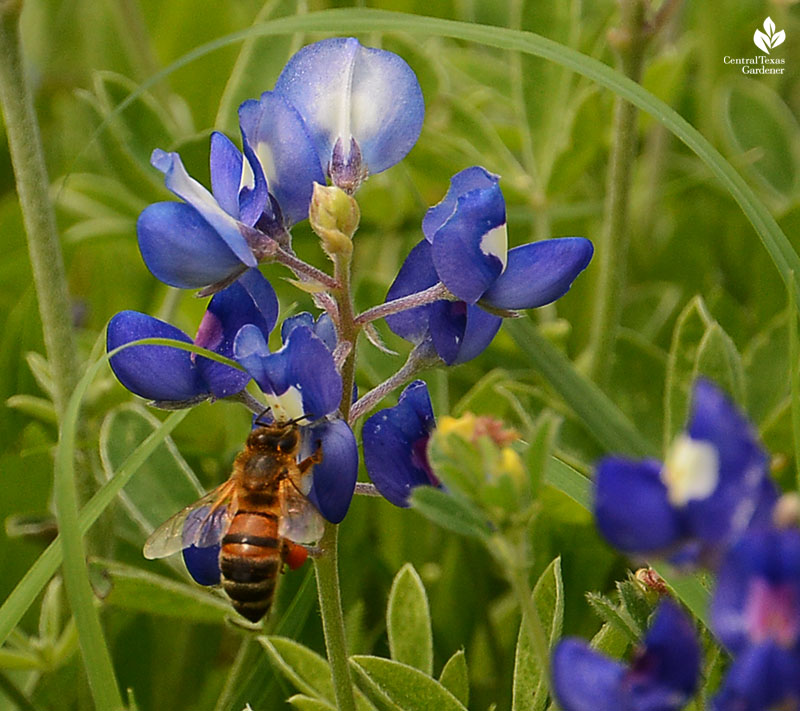
A neighbor lifts spirits along a busy street as she does all year in her mostly native curbside strip.
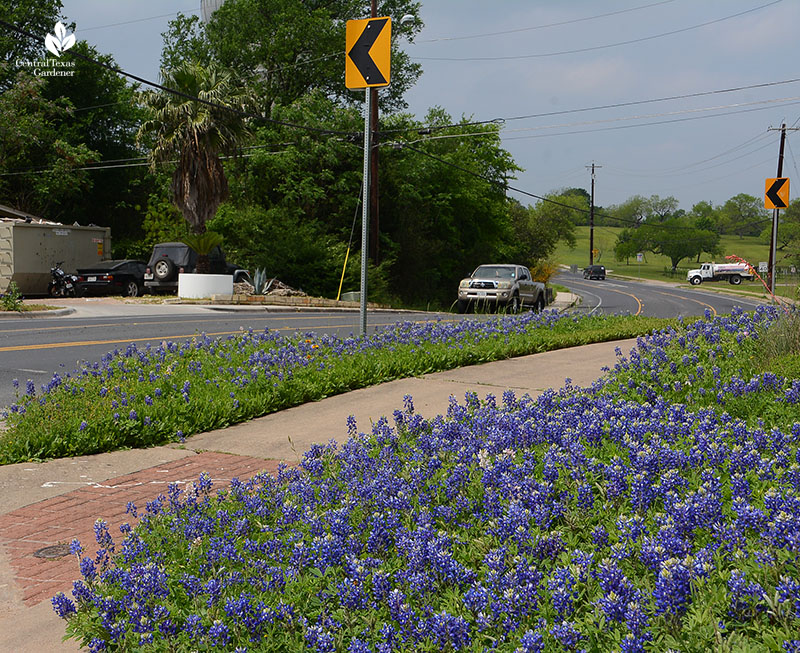
Hummingbirds will certainly brake for her red yuccas (Hesperaloe parviflora) and later native standing cypress, too.
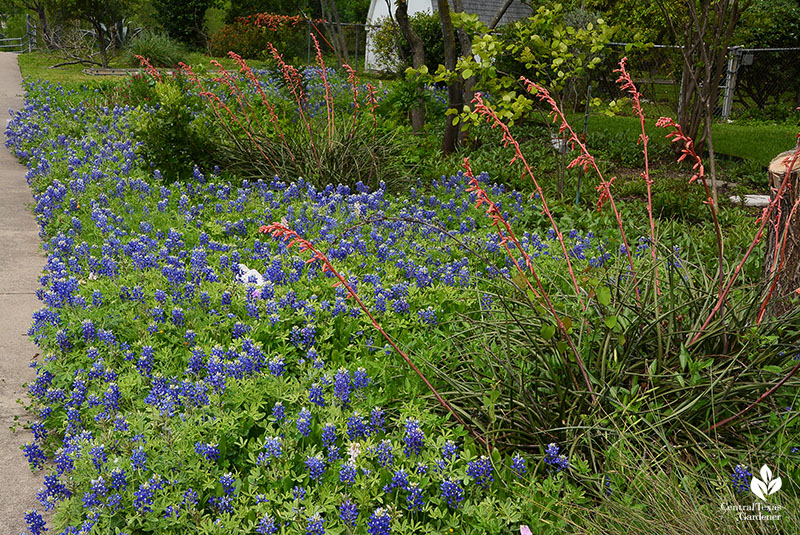
Although roadway traffic is sparse, it’s always pollinator rush hour on native wildflower Greenthread (Thelesperma filifolium), even in deer country where supposedly it gets a pass from those munchers.
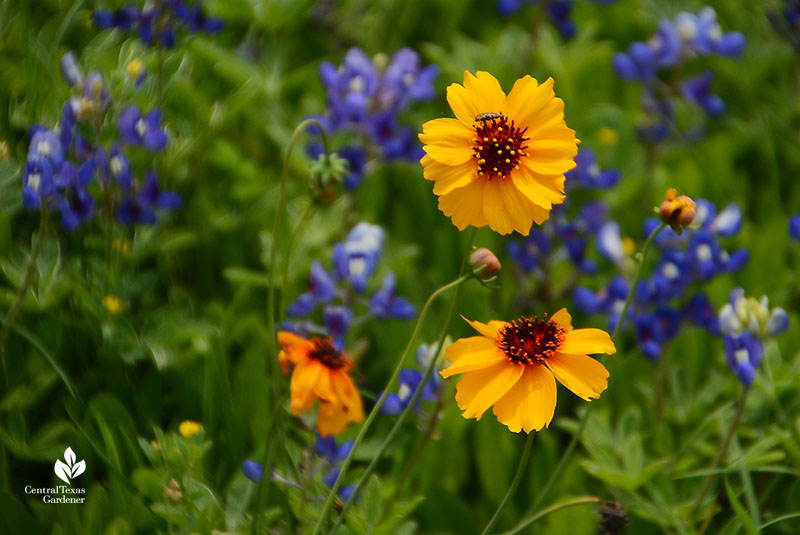
White pink-hued bluebonnets stand out in a crowd. Subsequent generations that seed out will revert to the dominate blue.
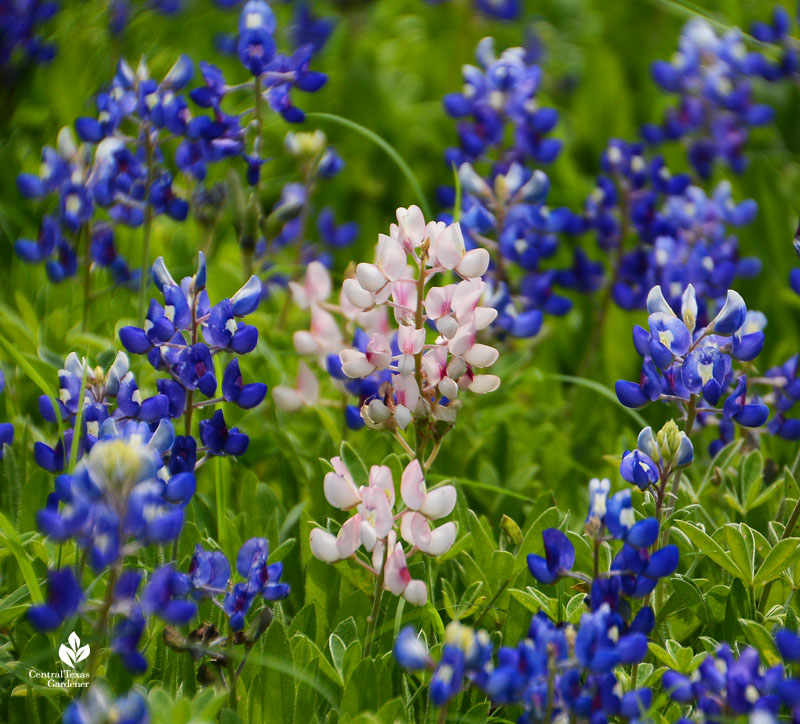
Pink evening primrose rambles buttercup-like petals in a field of blue.
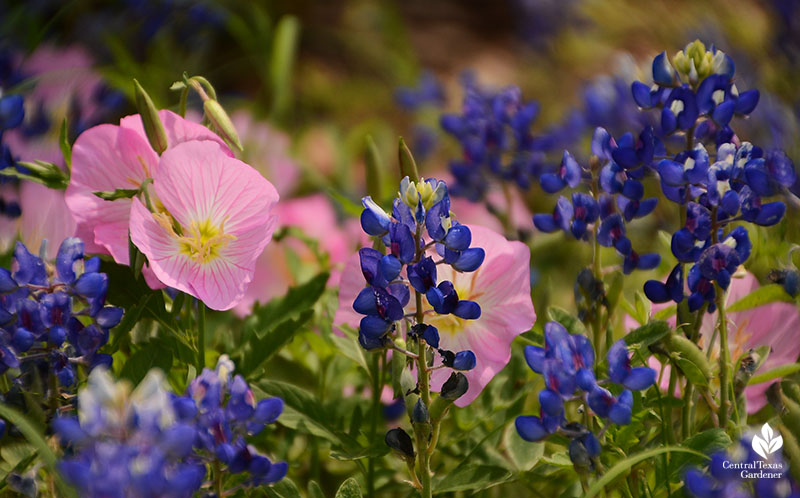
Also dotting sidewalks: Loquats promising succulent bites in a few months.
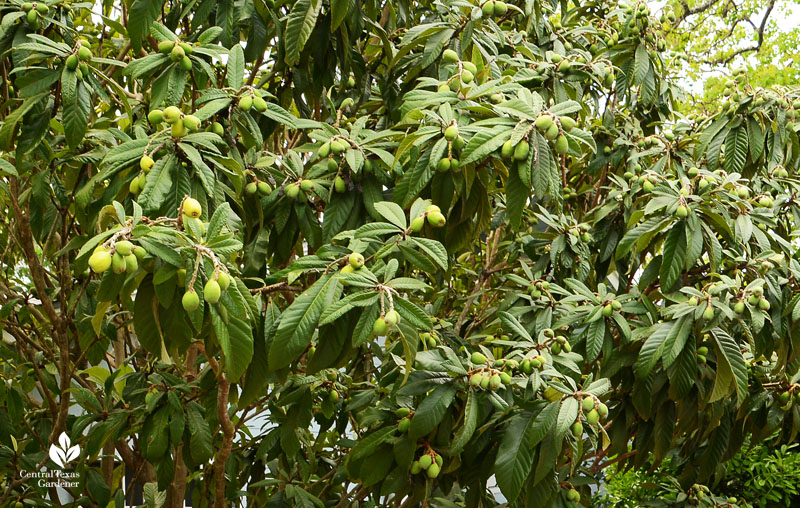
Loquat blooms in fall. Neighboring mountain laurel picks up the pollinator-feeding baton in late winter.
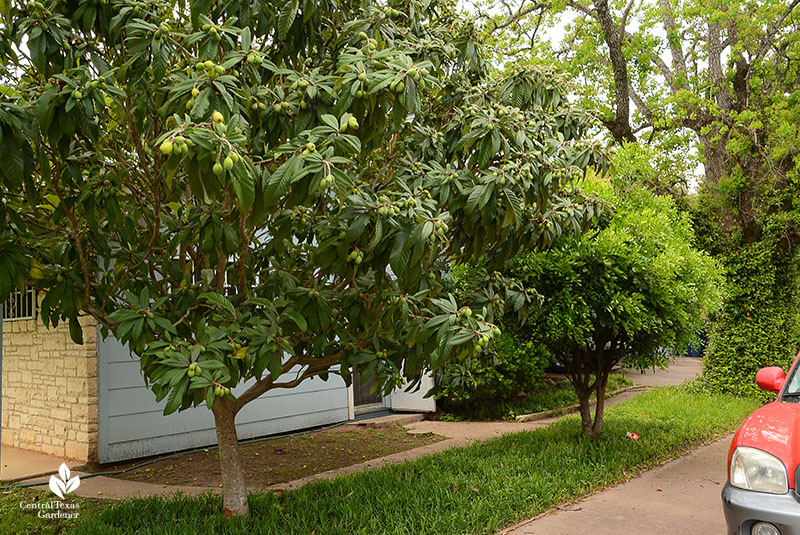
Native fruit trees, like Blanco crabapple, are just the right size for smaller gardens, growing 12-36’ tall, though its fall-ripening fruits are best for jams and jellies.
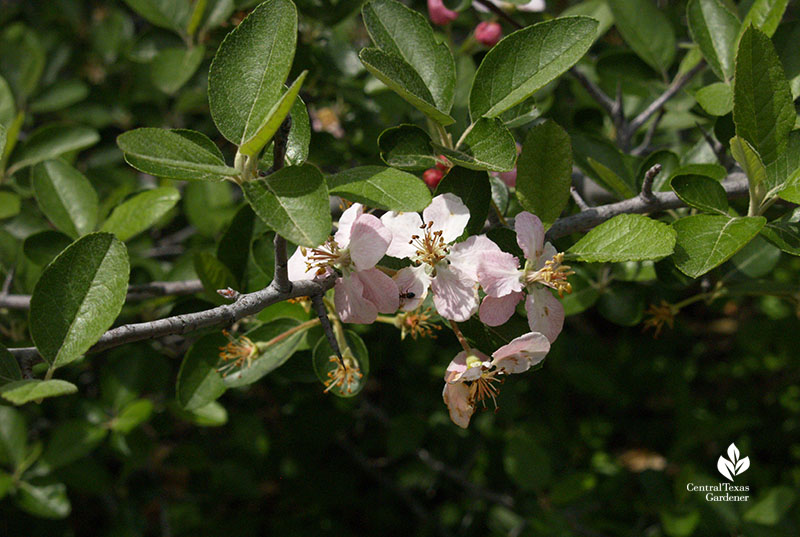
This week, horticulturist Karen Beaty from the Lady Bird Johnson Wildflower Center plucks a few for big and small gardens to feed us, the birds, and beneficial pollinators.
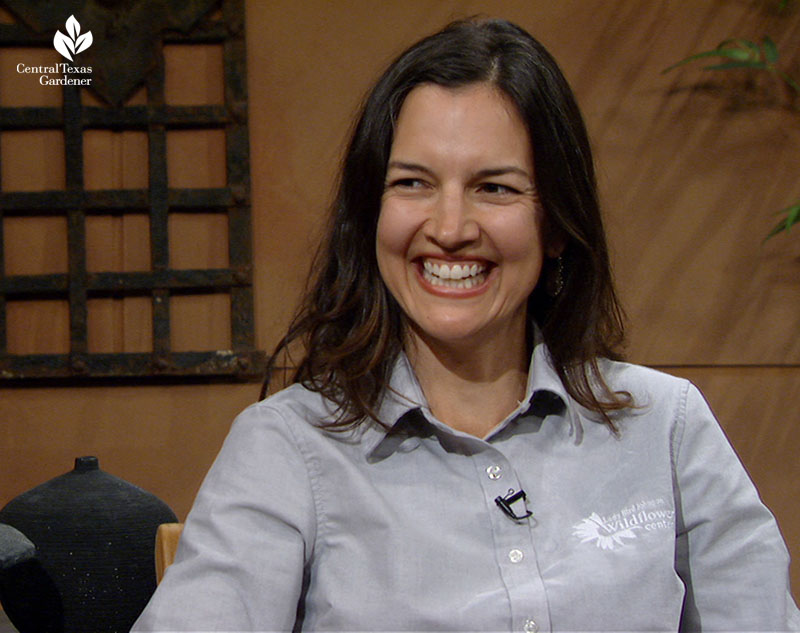
Along with Blanco crabapple, Mexican plum, red mulberry, black walnut, and acidic-soil lover pawpaw, see how Texas persimmon (Diospyros texana) adds multi-trunked smooth-bark structure on well-drained soil.
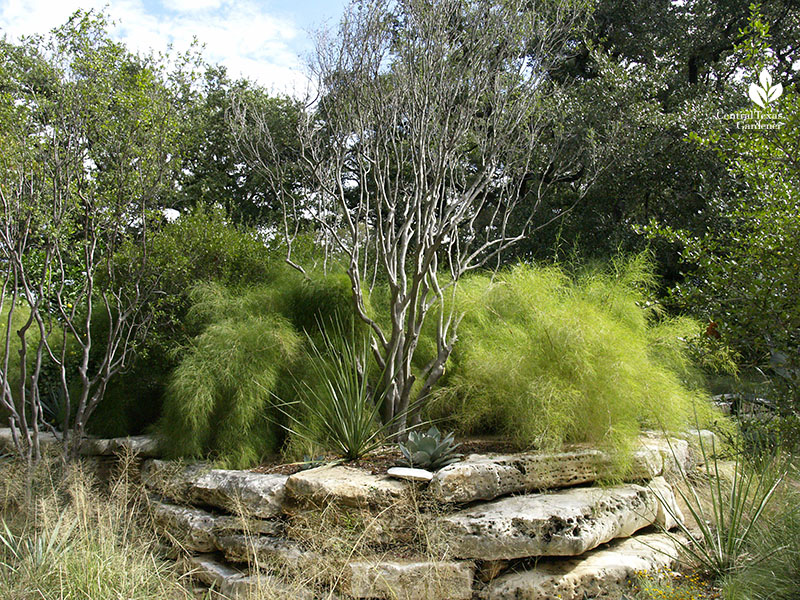
Growing 10-15’ tall, its fruits ripen to black in July-September. Tanja Joseph’s daughter proves how yummy they are!
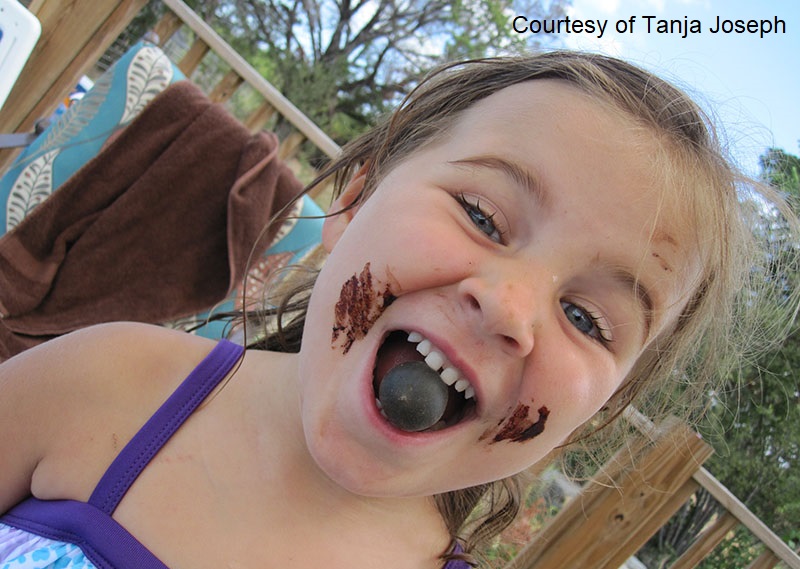
Watch all about native fruit trees now!
In really wet or super dry conditions, have you met these creatures crawling on your house? Millipedes! Daphne explains why they’re beneficial to the garden.
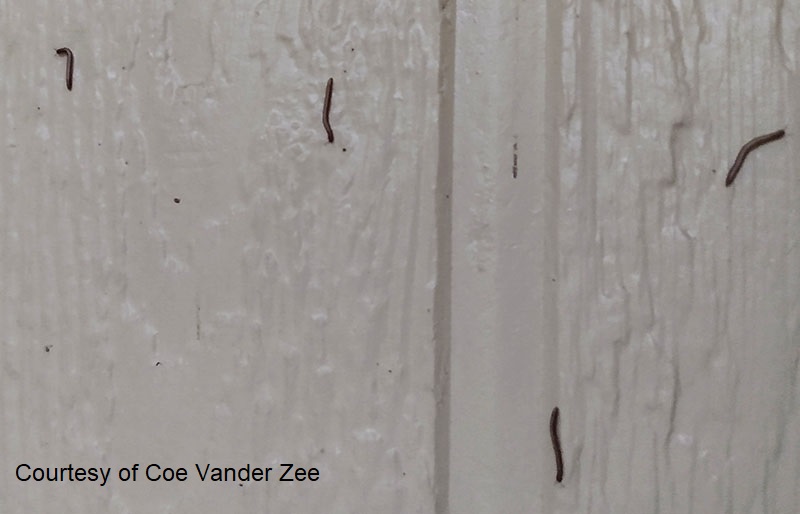
Also, learn why to diversify our gardens to control diseases and create an insect balance population. In Marble Falls, Doug Green only protects his pollinator garden from deer.
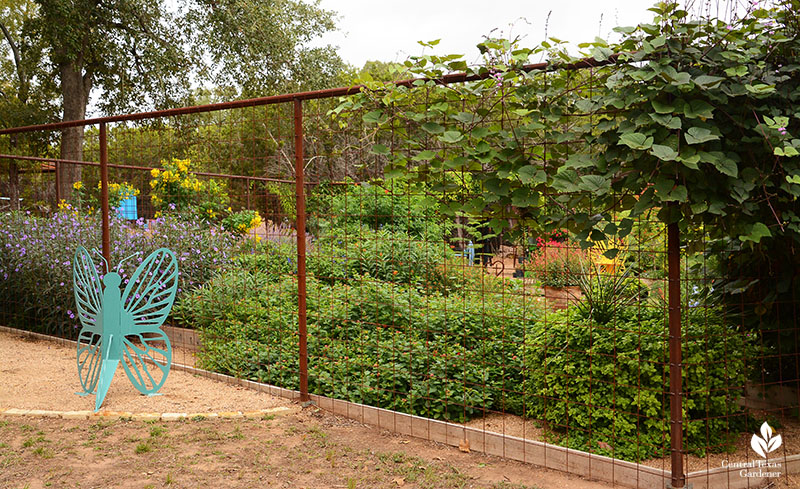
And here’s a reason to love your dandelions! Like common dandelions, native Texas or false dandelion (Pyrrhopappus pauciflorus) feeds small pollinators on warm winter days.
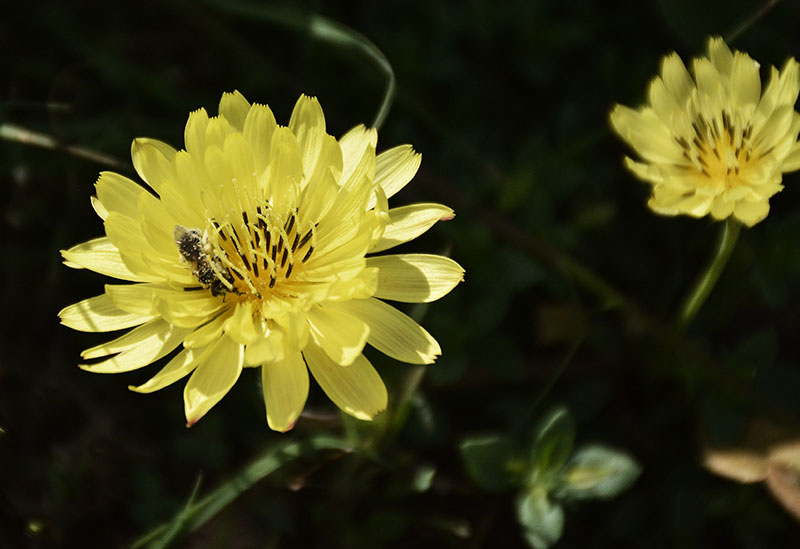
We can eat them, too, though best to gather in cooler weather before they flower.
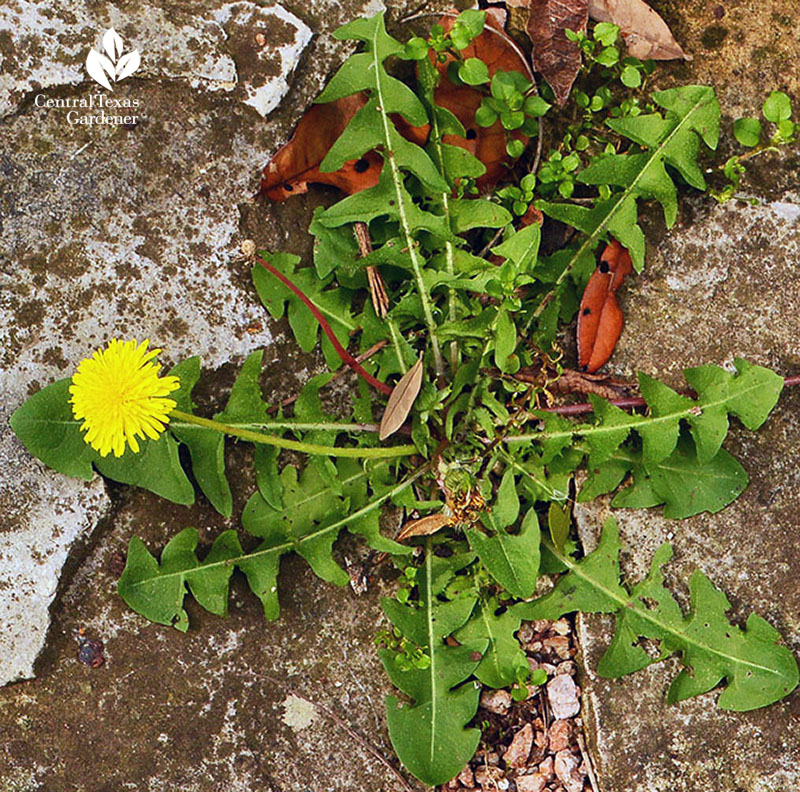
Alex Wolff tells us how his Italian-born grandmother, Evelyn Waters, looked forward to “Dandelion Day.”

His story: “When I was a kid growing up in the D.C. suburbs, my Nonni and I used to spend one weekend, usually in March, walking around her neighborhood in Reston, Virginia, picking dandelion greens. At the end of the day we would have piles of dandelion greens, ready to be taken home for one of my favorite meals of the year. On Dandelion Day, she would sauté the greens with a seemingly insane amount of fresh garlic, and serve it with a dough similar to pizza dough, shallow-fried in oil. We put the greens on the dough, and feasted!”
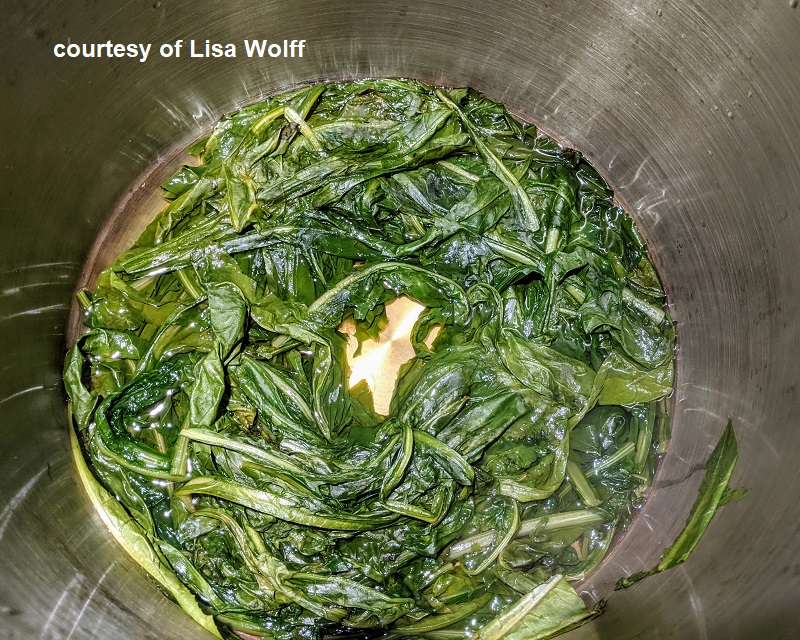
Get Lisa Wolff’s delicious family recipe!
Watch Daphne’s complete answers now!
Grocery shop at home this summer by starting sweet potatoes. Just a few slips can grow a healthy bountiful harvest for you and your neighbors. Travis County Master Gardener Sheryl Williams explains 3 methods so easy that even a kid can do it!
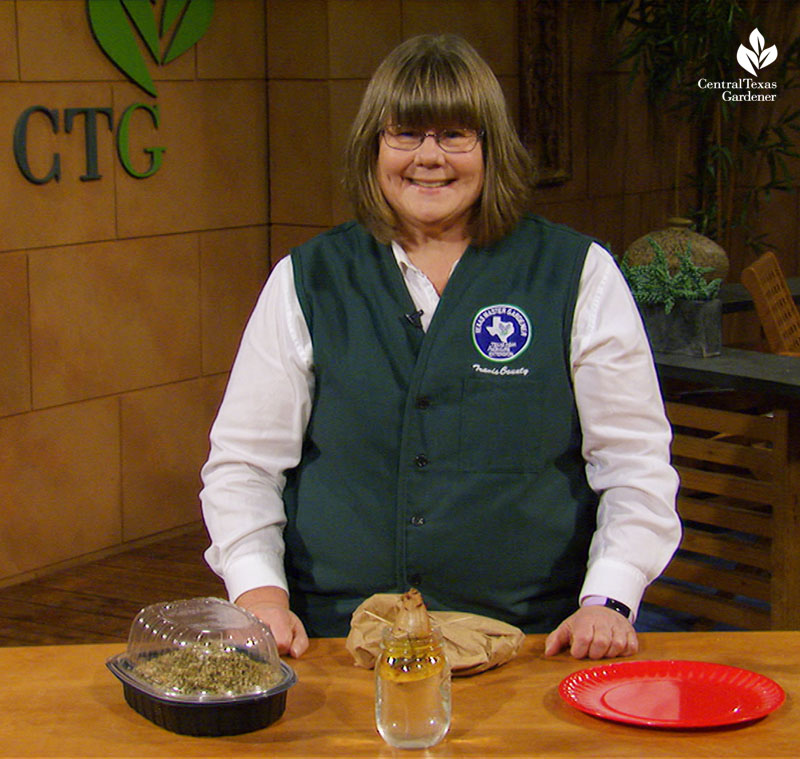
Watch sweet potato slips with Sheryl right now!
On tour, University of Texas at Austin students are seeding the future at the Half-Pint Urban Prairie just down the street from the iconic campus tower.
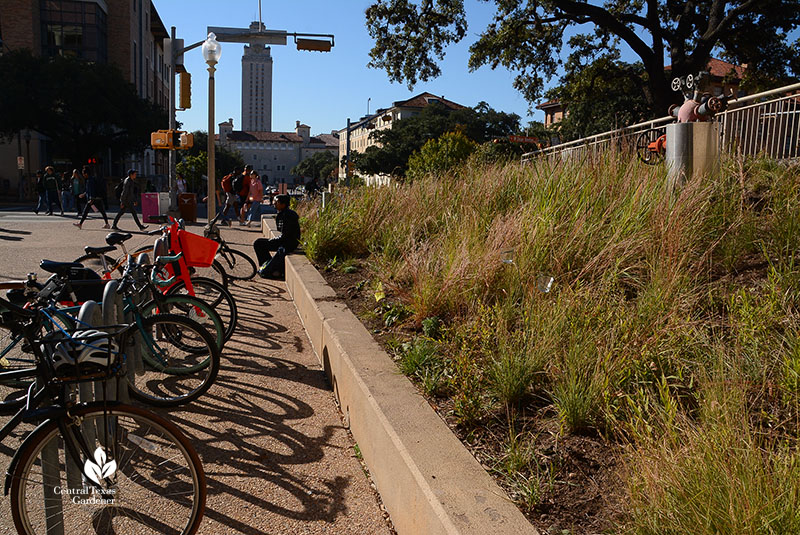
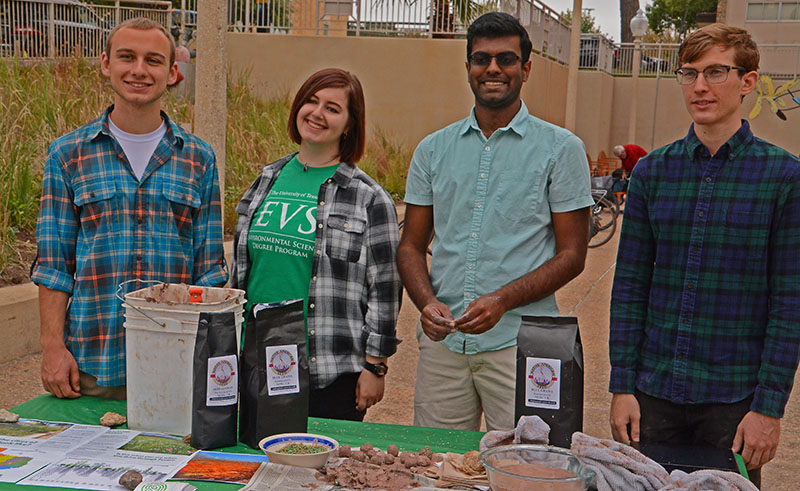
Although they’re currently studying online, their native grasses and flowers continue growing to demonstrate the beauty and importance of the Blackland Prairie ecoregion.
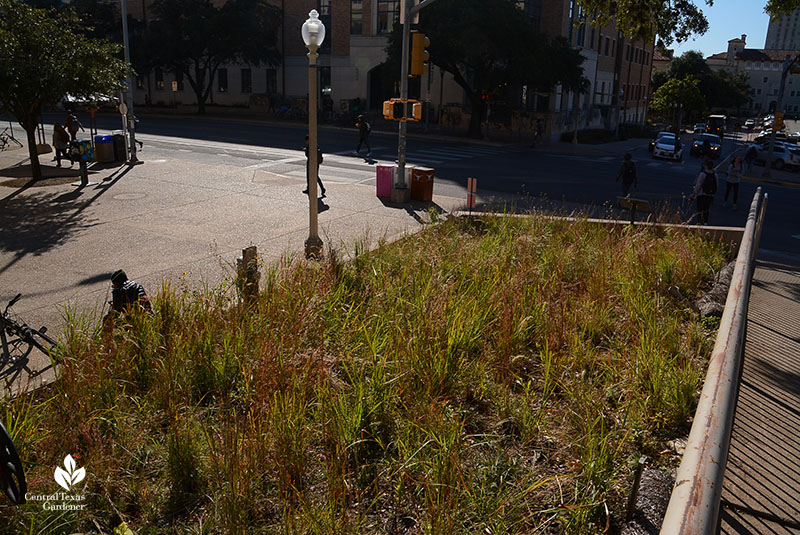
A project of the student-led Campus Environmental Center (CEC), they broke ground in February 2019 at the Student Services building on a bed formerly hosting invasive nandinas.
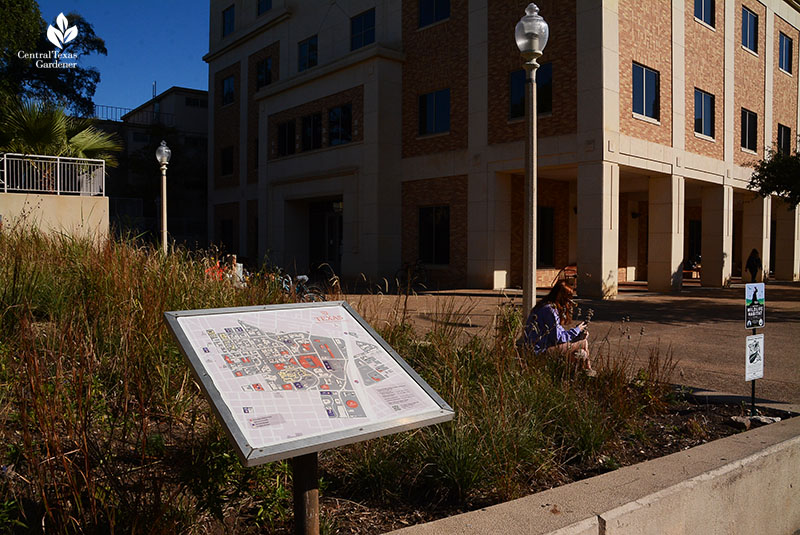
Last fall we met with Environmental Science major Avery McKitrick, CEC director 2019-2020, who told us: “It’s so important to make a connection between scientists and what they know and people, just average, everyday people and what they need as a community, as a country, as a state, at all the different levels.”
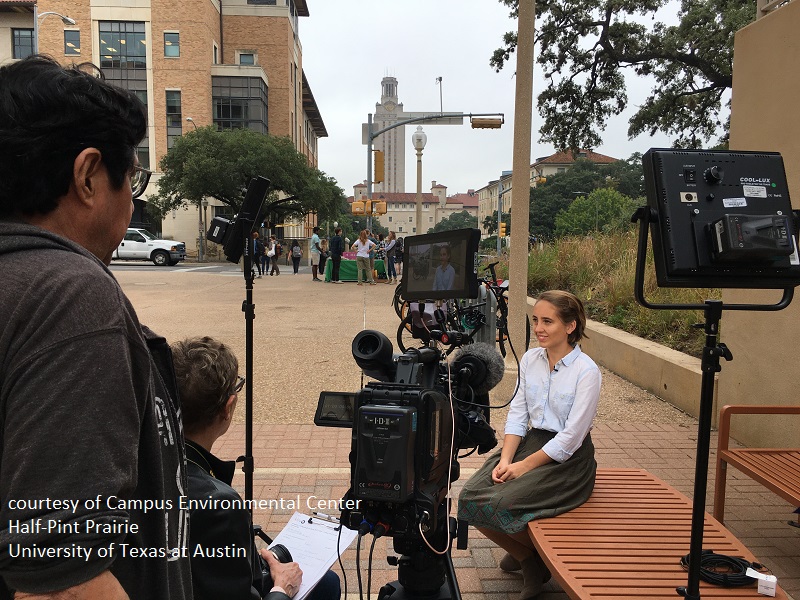
Half-Pint team leaders Jack Rouse (English/Accounting) and Mark DeGraff (Environmental Science) dug in to educate students, faculty and staff about how Blackland Prairie plants respect the land we live on.
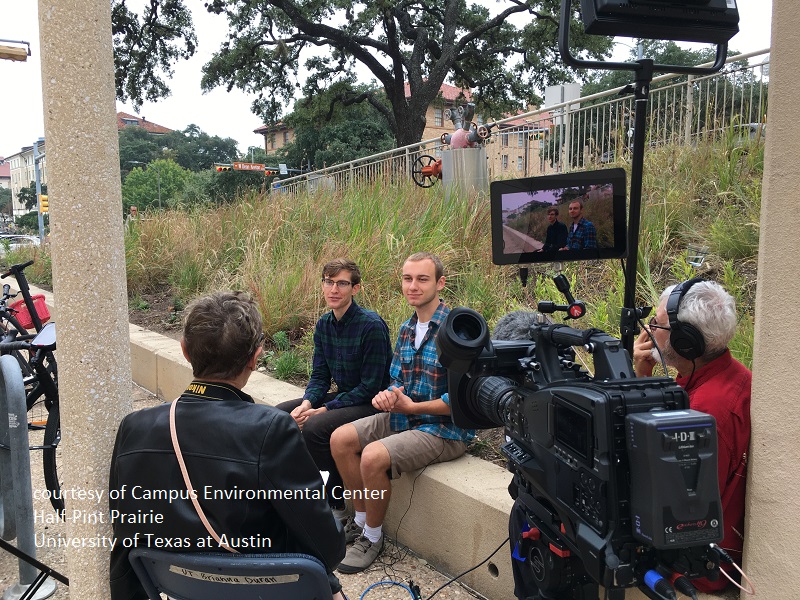
Along with perennial beauty, deep-rooted native grasses control rainwater runoff and support wildlife.
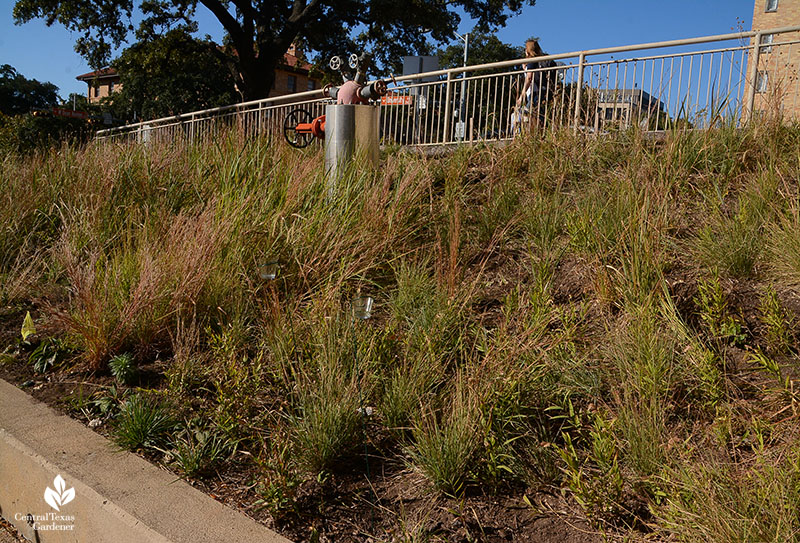
The Blackland Prairie, an ecosystem strip that extends from the Oklahoma border through San Antonio, is quickly disappearing.
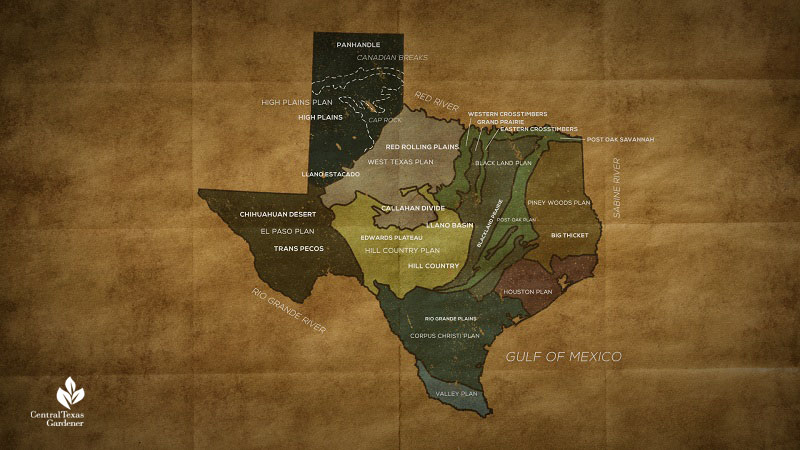
UT’s Landscape Services enthusiastically embraced the project to build on their campus-wide native plant diversity.
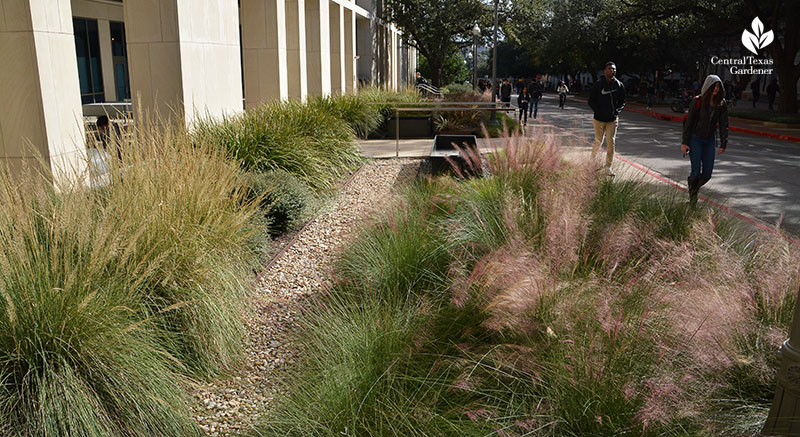
Students were assisted by Jim Carse, UT’s Landscape Services Manager, and Matt O’Toole, Director of Ecological Research and Design at the Lady Bird Johnson Wildflower Center. Along with providing transplants to jump start Half-Pint, they had the solution for preventing erosion on the steep slope as plants establish.
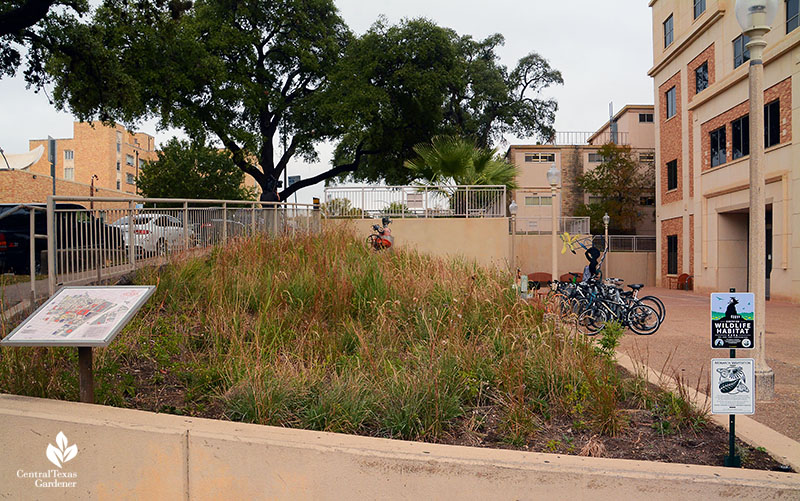
Already a variety of grasses, including prairie wildrye and little bluestem, thrive just months after planting.
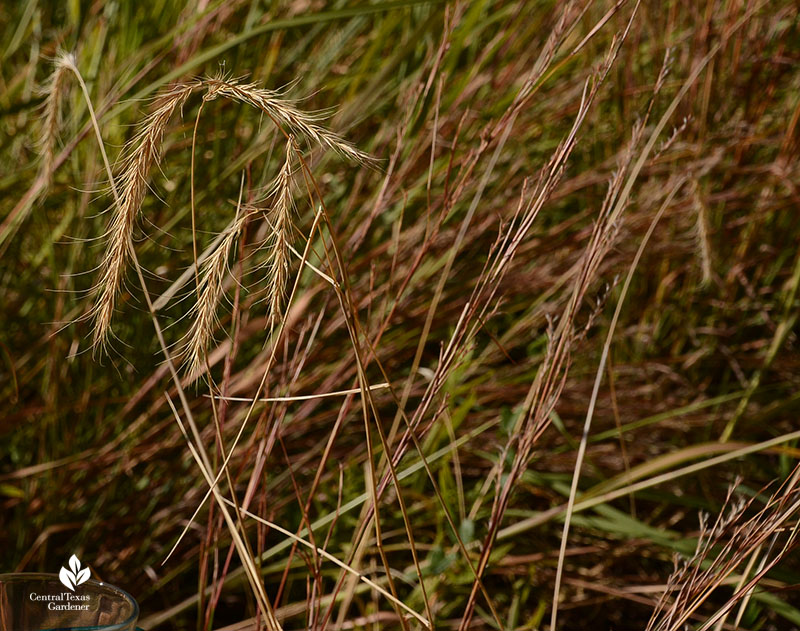
Along with warm and cool season grasses, they included annual and perennial flowers for pollinator nectar and pollen, as well as seeds for birds and gregarious campus squirrels! (Much healthier than the ice cream a squirrel grabbed out of a friend’s hand when I was a UT undergrad)
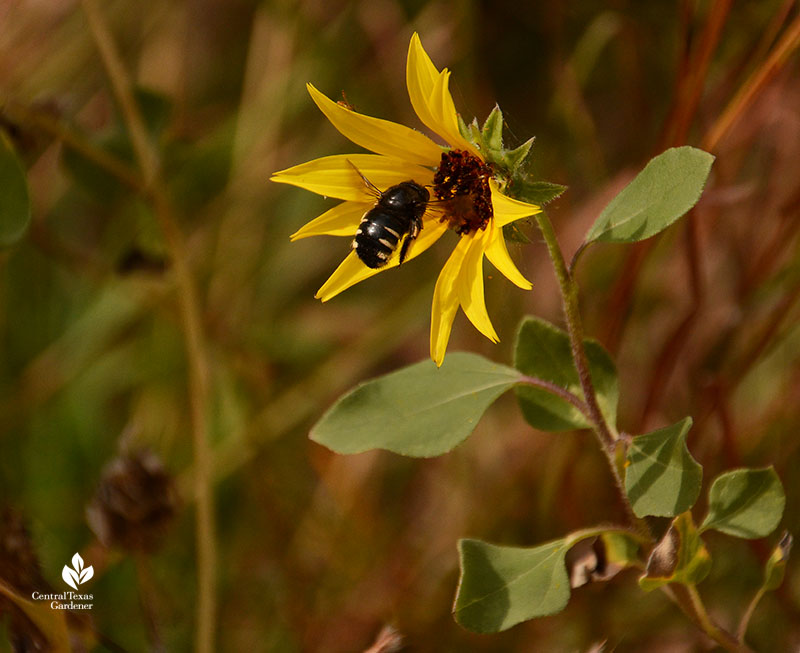
Standing cypress beckons hummingbirds.
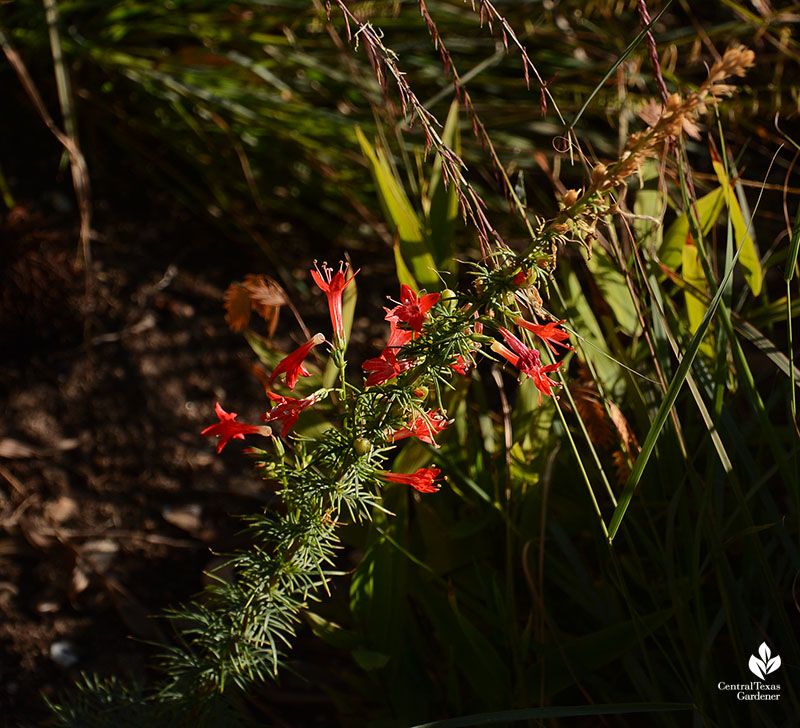
Last fall, the Half-Pint team made seed balls that germinated over the winter. As Katherine Faulkner
(Biological Environmental Science) and Pranav Jayaraman (Neuroscience) rolled them in clay, they invited passing students to cast their own contribution to the future.
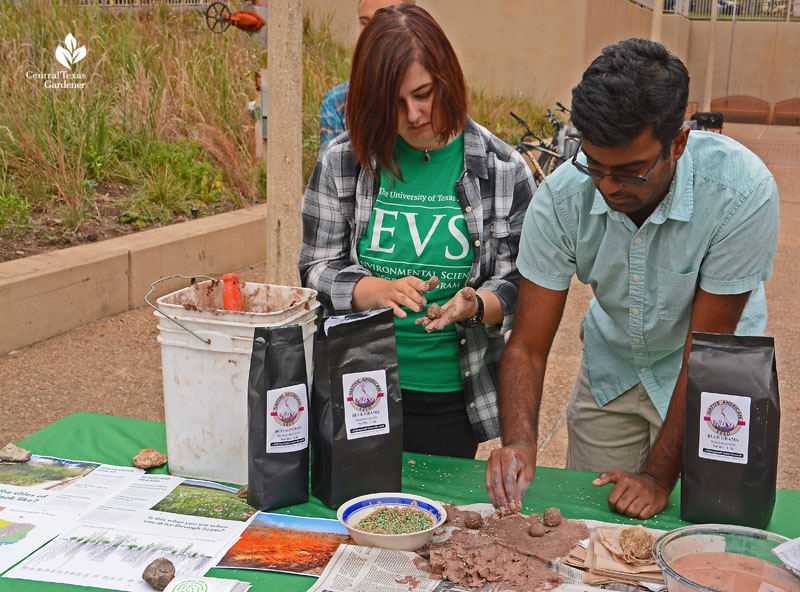
As CEC students hone leadership skills to graduate with them, neuroscience student Pranav raises awareness on how green spaces also benefit physical and mental health, and have been linked with lower rates of depression and anxiety. A most important message right now, don’t you think?
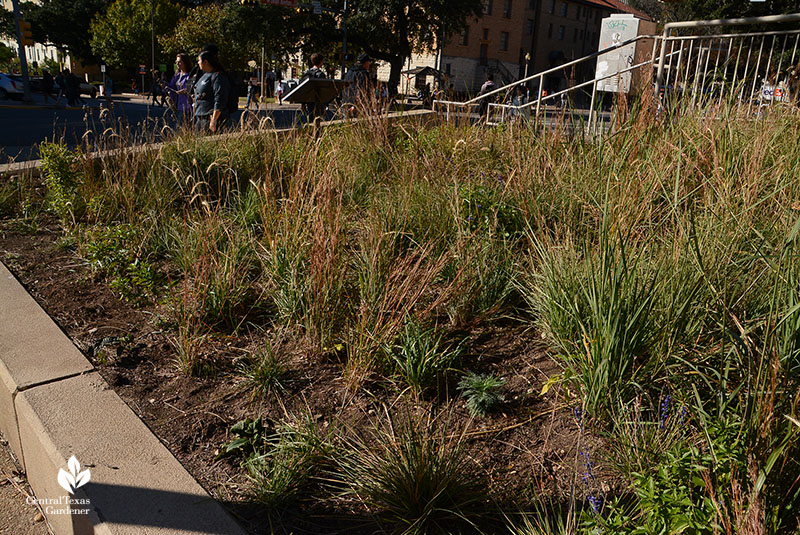
So, go plant seeds! Check out Native American Seed’s native plants to grow the future, one yard at a time!
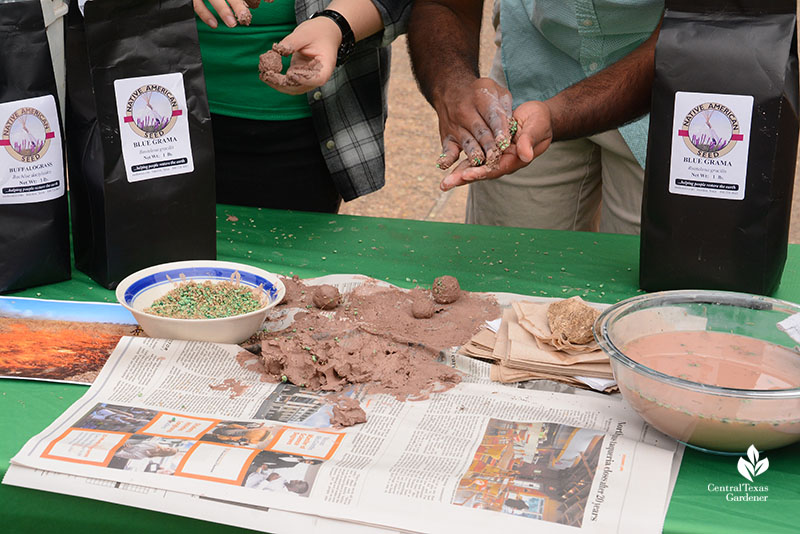
On April 22, we celebrate the 50th anniversary of Earth Day. These students weren’t even born yet. But they’re making the time to ensure that in 50 years, we’ve got something to celebrate. Thank you.
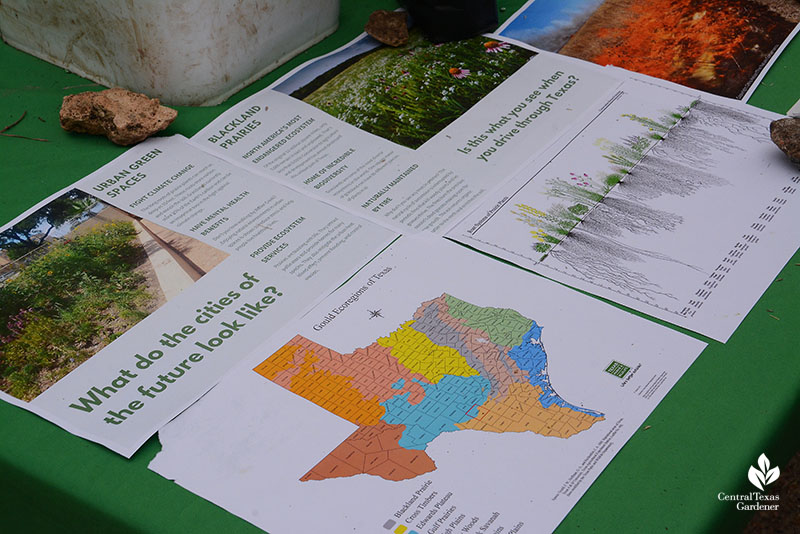
Watch now!
Thanks for stopping by! “See” you next week, Linda
tags:

